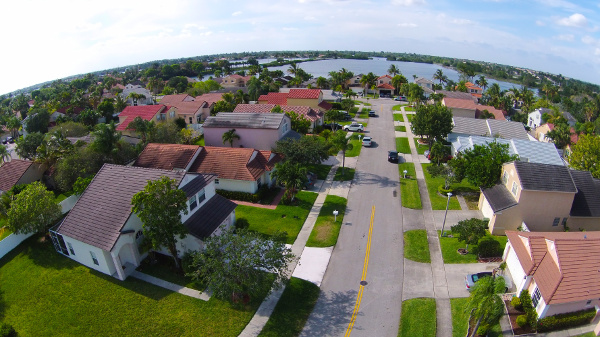Evaluating Neighborhoods: 4 Things to Consider Before Purchasing a Home
 From finding the right agent to discovering the home you can truly feel comfortable in, there are a variety of things involved in the home buying process. However, it’s important not to get caught up in the home and ignore altogether the community you’ll be living in. If you’re planning a move to a new neighborhood, here are some things you should look into before putting in an offer.
From finding the right agent to discovering the home you can truly feel comfortable in, there are a variety of things involved in the home buying process. However, it’s important not to get caught up in the home and ignore altogether the community you’ll be living in. If you’re planning a move to a new neighborhood, here are some things you should look into before putting in an offer.
Local Amenities
A peaceful, picturesque community is ideal, but if there are not a lot of resources nearby for your family, it’s possible that your new neighborhood may not be the best fit. Instead of having to get in the car and drive everywhere, ensure you research nearby community centers, green spaces and recreational spots so your family has somewhere to spend their weekends.
Research The Crime Rate
You can certainly get a good sense of the well being of a community just by looking at it, but be sure that you’re informed about exactly how safe the surrounding area is so your family will feel at ease in their new locale. While you can easily research the community and find information online, websites like Neighborhood Scout and Crime Report also make it simple to discover the less well-known details.
Transportation And Accessibility
A community you love is ideal, but if you work in the downtown core or an area far away, it will be important to determine the effect this will have on the length of your commute. In addition, you’ll want to be sure there are local transportation options like buses and shuttles that provide access all over the center in the event that it’s needed.
Learn About The Locals
There’s something to be said for the perfect home, but you’ll also need to feel a certain sense of comfort in the place you live so ensure you choose a place with nice neighbors and a community feel. This may seem hard to determine before buying a house, but try visiting the local community center or knocking on a few doors for a quick impression of what the locals are like.
It can be easy to throw everything else out the window as soon as you’ve found the perfect home, but it’s important that your home is situated in a neighborhood you’ll feel comfortable in. Contact your local mortgage professional for more information.

 The call of fancy vacation locations and the additional earnings that can come along with this type of home may appeal to many homebuyers, but a lot of time and money can go into maintaining a second property. If you’re currently considering a vacation home for your own use or as a potential investment, here are a few factors to consider before jumping into the fray of a long distance home.
The call of fancy vacation locations and the additional earnings that can come along with this type of home may appeal to many homebuyers, but a lot of time and money can go into maintaining a second property. If you’re currently considering a vacation home for your own use or as a potential investment, here are a few factors to consider before jumping into the fray of a long distance home. Last week’s economic news was dominated by Great Britain’s vote to withdraw from the European Union. New and Existing Home Sales were released along with weekly reports on mortgage rates and new jobless claims.
Last week’s economic news was dominated by Great Britain’s vote to withdraw from the European Union. New and Existing Home Sales were released along with weekly reports on mortgage rates and new jobless claims.